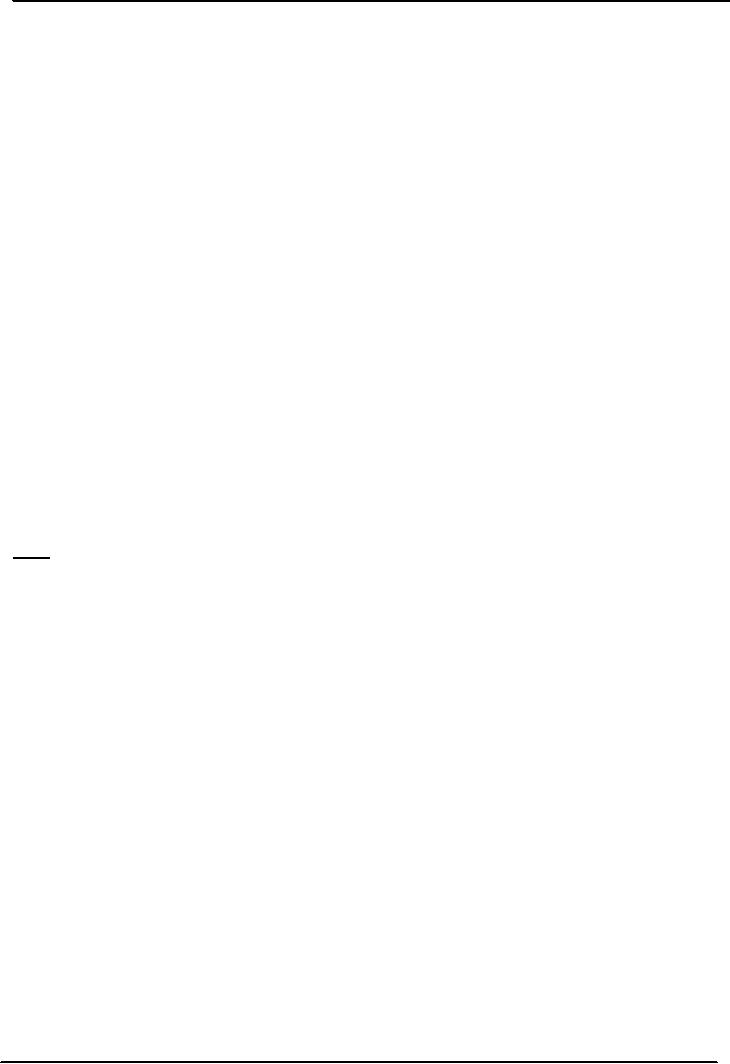 |
HISTORICAL BACKGROUND 1900-1909:Frank Parson, Psychopathic Hospitals |
| << HISTORICAL BACKGROUND COUNSELING & PSYCHOTHERAPY |
| HISTORICAL BACKGROUND:Recent Trends in Counseling >> |

Theory
and Practice of Counseling -
PSY632
VU
Lesson
03
HISTORICAL
BACKGROUND
1900-1909
Frank
Parson
Frank
Parson is known as a broad scholar, a
persuasive writer, a tireless
activist, and a great intellect. He
is
rightly
called the "father of guidance" and is
best known for founding
Boston's Vocational Bureau in
1908.
He
initiated vocational guidance movement,
but he would not have
envisioned the growth of the movement
from
the several dozen, he trained, to 115,000
school counselors by
1994.
Parson
(1909) believed that the vocational
counselor should have the following
traits:
�
A
practical working knowledge of
psychology
�
An
experience involving sufficient
human contact
�
An
ability to deal with young
people
�
A
knowledge of requirements and conditions
of success
�
Information
about courses and means of
preparation
�
Scientific method
analysis
Frank
Parson's work on vocational guidance
classified the facts, identified the
causes, and drew the
conclusions
about several issues pertaining to
suitability of people for different
work environments.
Clifford
Beers: Mental Health
Movement
During
the same period (1900-1909),
other professional developments
evolved independently and
merged
to
help form the modern approach to
counseling. Mental health movement,
like vocational guidance
movement,
owes much to the efforts of
one person. Clifford Beers,
a former Yale student, was
hospitalized
for
mental illness several times
during his life. He found
conditions in mental institutions
deplorable and
exposed
them in a book, A
Mind That Found Itself
(1908),
which became very popular.
Beers advocated
better
mental health facilities and reforms in
the treatment of the mentally ill. His
work had an
especially
powerful
influence on the fields of psychiatry and psychology,
where many of these people referred to
what
they
were doing as counseling.
Beers was the impetus for
the mental health movement in the United
States,
and
his work was a forerunner of
mental health counseling.
He
noted abuse of weak
and
violent
patients.
Weak patients and violent
patients were abused the
first day
they
would admit into a hospital because of
the helplessness of the later and
aggressive behaviors of the
former.
This procedure seemed to be a part of
established code of dishonor.
His descriptions
aroused
public
to humanitarian movements. During 798
days of depression in hospital, he said
that he draw
countless
incorrect deductions.
These
and similar descriptions
aroused the public to
initiate
1.
Humanitarian reforms
2.
Scientific inquiry into the problems of
mental illness and its
treatment.
With
the help of a few psychologists of the time,
Such as William James and
Adolph Meyer, the
mental
hygiene
movement was launched to educate the
general people. Mental
Hygiene movement was
responsible
for
legislative reforms, aftercare,
and free clinics for the
mentally ill. In 1909 Beers supplied the
leadership
for
National Committee for Mental
Hygiene.
Psychopathic
Hospitals
Viewpoint
that individuals are products of
both their environment and
heredity gave rise to new type
of
institutions
called "Psychopathic
Hospitals".
Psychopathic
Hospitals located
in communities became the
forerunner
of modern day community mental health
centers. In these hospitals
outpatient treatment was
12

Theory
and Practice of Counseling -
PSY632
VU
preferred
rather than custodial care. They
Improved standards of treatment, though
controversial, and
provided
base for establishing local
clinics for disturbed children.
Other
Early Leaders in Guidance
Movement
The
work of Jesse Davis, Eli
Weaver, and Frank Parsons
and a host of other pioneers
created momentum
for
the development of a school counseling
profession.)
Anna
Reed:
Developed
guidance programs to judge a
person's worth by his/her
employability. Reed was an
admirer of
the
prevailing concepts of the business
world. She believed that
guidance services are
important for
developing
best educational products.
Contrary to today's philosophy,
she placed the business
needs above
those
of the individual.
Eli
Weaver:
Eli
Weaver established teacher
guidance committees in every
high school in New York to
help youths
discover
their capabilities for the
most appropriate employment
Davis
S. Hill:
Davis
S. Hill advocated and worked
for a diversified curriculum complemented
by vocational guidance.
1910s:
Standardized Testing
�
Prior
to World War I human
assessments were made on the
basis of individual differences on a
variety
of
tasks. The French
psychologist Alfred Binet
and his associate Theodore
Simon introduced the
first
general
intelligence test in 1905. In 1916, a
translated and revised version
was introduced in the
United
States
by Lewis M. Terman and his
colleagues at Stanford University, and it
enjoyed widespread
popularity
in the schools. Prior to World
War I technical efforts to
human assessment were
limited to
the
work of individual researchers attempting
to measure individual differences on a
variety of tasks like
reaction
time and sensorimotor abilities.
�
World
War I was the third
important event of the decade. To screen
its personnel, the U.S.
Army
commissioned
the development of numerous psychological
instruments, among the Army
Alpha and
Army
Beta intelligence
tests. Several of the army's
screening devices were
employed in civilian
populations
after the war. These were based on
group testing.
�
The
first standardized achievement
and aptitude tests were
constructed at that time. Testing of
special
aptitudes
in music, mechanics, and
arts was also
started.
�
In
1915, the first guidance
journal "Vocational Guidance"
was published.
�
The
first standardized achievement
tests predicted success in areas
such as academic
performance.
�
Robert
Yerks, APA president, headed a committee
of psychologists to develop IQ and other
measures.
�
In
many ways developments in
mental measurements and
other types of human
assessment formed the
basis
for the early technology of counseling
practice
1920s
�
The
1920s were relatively quiet
for the development of guidance
profession.
�
A
notable event was the certification of
counselors in Boston and New
York in the mid-1920s.
�
Another
turning point was the development of the
first standards for the preparation
and evaluation of
occupational
materials. Certification in guidance
profession started in mid-twenties.
�
Along
with these standards came
the publication of new psychological
instruments such as Edward
Strong's
Strong
Vocational Interest Inventory
(SVII)
in 1928, which set the stage
for future directions
13

Theory
and Practice of Counseling -
PSY632
VU
�
In
1921, Cattel founded
Psychological corporation to sell
tests
�
First
centre of Marriage and family
counseling by Abraham & Hannah (1929)
marked the beginning of
the
subspecialty
�
This
decade not only stimulated
the development and usage of standardized
tests, but also
was
significant
to the development of one of the early
specializations in counseling:
rehabilitation counseling.
Vocational
rehabilitation services were
initiated for
veterans.
�
In
1921 Rorschach's very popular
inkblot test, Psychodiagnostic,
was developed.
Child
Guidance Movement:
Child
Guidance Movement was primarily
initiated as the result of the work of G.
Stanley Hall.
Hall
was also influenced by Freud, and
introduced his ideas in USA.
He studied different phases of
mental
life
in all ages.
Child-study
movement was fourfold:
�
Individual
as the focal point of study
�
Importance
of the formative years
�
Need
for reliable, factual knowledge about
children
�
More
accurate methods of child
study
Child
study centers were designed
to promote the well-being of
children
The
first child guidance clinic
was founded in Chicago in
1909 by an English psychiatrist, William
Halley,
who
worked on children delinquency and
misbehaviour.
1930s
Williamson's
Trait-Factor Approach:
Highlight
of this decade is the development of first
counseling theory by Williamson et al.
Williamson used
this
theory to work with students
and unemployed. His theory is a
trait-factor, directive, and
counselor
centered
approach. His approach is
also considered the Williamson modified
Parsons's theory. He
emphasized
traits (aptitudes, interests,
personalities, and achievements) of the
counselor for the
effectiveness
of counseling. His pragmatic
approach emphasized the teaching,
mentoring, and
influential
skills
of the counselor. His theory dominated
counseling for the next 2
decades. It was based on a
scientific,
problem
solving, and empirical method that
was individually tailored to
each client in order to help
him stop
his
nonproductive thinking.
John
Brewer:
John
Brewer helped broaden counseling beyond occupational
concerns. He emphasized this change
and
published
a book "Education
as Guidance" He maintained
that every teacher be a
counselor and that
guidance
be
incorporated into school curriculum. The
purpose is to teach the student to
live outside the
school.
Influence
of World War I:
World
War I resulted in two significant
acts:
1.
Civilian Vocational Rehabilitation
Act
2.
Veteran's bureau
Other
Important Developments:
�
The
term of Rehabilitation Counselor appeared
in late 1930.
14

Theory
and Practice of Counseling -
PSY632
VU
�
By
the 1930s 50 psychological clinics
and 12 child guidance
clinics were formed.
�
In
1939, Wechseller Adult
Intelligence Scale was
introduced
�
Establishment
of US Employment Service, published the
first edition of Dictionary
of Occupational
Titles
in
1939. DOT was used as the
major source of career information
for guidance
specialists
working
with students and
unemployed.
�
New
measures of personality, interests, abilities,
emotions and traits were
constructed.
1940s
�
By
1940 over 500 psychological
tests appeared.
�
A
Measurement Year Book was
constructed to catalogue
tests
During
this decade, three major events
radically shaped the practice of
counseling:
1.
The theory of Carl Rogers:
Client Centered
Approach
2.
World war II
3.
Govt.'s involvement in
counseling
Carl
Rogers
Carl
Rogers rose to prominence in 1942
with the publication of counseling
and psychotherapy.
More
than any other person,
Rogers influenced the way American
counselors interact with
clients.
Client
centered approach maintained that
counselor serve as a mirror, reflecting
the verbal and emotional
manifestations
of the clients.
He
emphasized in his two books: "counseling
and psychotherapy" "client centered
therapy" that the
client
assumes
the major responsibility for solving his/her
problems. His nondirective
approach was opposite of
traditional
method of counselor being the focus of
attention. This approach was
different from the
trait
approach
of Williamson. After continued research
and application efforts, this was a
semantic change from
nondirective
to client-centered approach.
Often
it is stated that his
contribution to counseling is analogous
to Henry Ford's contribution to
the
development
of automotive industry.
Aubery
(1977) noted that before
Rogers the literature in counseling was
very practical, e.g., a lot of
testing,
maintaining
cumulative records, vocational and
placement functions, etc. Rogers
emphasized a new
approach
focusing on techniques of counseling,
training of counselor, and
research. Due to
Rogers'
influence
guidance for all intents and
purposes suddenly
disappeared.
World
war II & Govt.'s (US)
Involvement
�
After
World War II, counseling and
guidance movement appeared to be taking a
new vitality and
focus.
Involvement of psychology in World
War II was far greater
than World War I.
�
There
was a postwar explosion effect, e.g.,
funding as well as stipend and paid
internships were
available
to students.
�
In
1944 alone over 60 million
tests were administered to 20
million soldiers and civilians
and
Veterans
Administration (VA) established
centers to provide
counseling
�
VA
coined the term Counseling
psychologist and
funded the training of counselors
and psychologists
�
About
1500 psychologists served in
war
�
Wider
range of military-oriented tests
including Army
General Classification for
groups was created.
�
Brief
measures of TAT and Rorschach
appeared.
15

Theory
and Practice of Counseling -
PSY632
VU
�
By
1960 many people had become
highly critical of the practice of using
such tests for
educational
and
job selection. The criticism
was that these tests
are penalizing minority groups
who score low
on
these tests not because of
their lack of abilities but
due to less equal
opportunity.
16
Table of Contents:
- INTRODUCTION:Counseling Journals, Definitions of Counseling
- HISTORICAL BACKGROUND COUNSELING & PSYCHOTHERAPY
- HISTORICAL BACKGROUND 1900-1909:Frank Parson, Psychopathic Hospitals
- HISTORICAL BACKGROUND:Recent Trends in Counseling
- GOALS & ACTIVITIES GOALS OF COUNSELING:Facilitating Behavior Change
- ETHICAL & LEGAL ISSUES IN COUNSELING:Development of Codes
- ETHICAL & LEGAL ISSUES IN COUNSELING:Keeping Relationships Professional
- EFFECTIVE COUNSELOR:Personal Characteristics Model
- EFFECTIVE COUNSELOR:Humanism, People Orientation, Intellectual Curiosity
- EFFECTIVE COUNSELOR:Cultural Bias in Theory and Practice, Stress and Burnout
- COUNSELING SKILLS:Microskills, Body Language & Movement, Paralinguistics
- COUNSELING SKILLS COUNSELOR’S NONVERBAL COMMUNICATION:Use of Space
- COUNSELING SKILLS HINTS TO MAINTAIN CONGRUENCE:
- LISTENING & UNDERSTANDING SKILLS:Barriers to an Accepting Attitude
- LISTENING & UNDERSTANDING SKILLS:Suggestive Questions,
- LISTENING & UNDERSTANDING SKILLS:Tips for Paraphrasing, Summarizing Skills
- INFLUENCING SKILLS:Basic Listening Sequence (BLS), Interpretation/ Reframing
- FOCUSING & CHALLENGING SKILLS:Focused and Selective Attention, Family focus
- COUNSELING PROCESS:Link to the Previous Lecture
- COUNSELING PROCESS:The Initial Session, Counselor-initiated, Advice Giving
- COUNSELING PROCESS:Transference & Counter-transference
- THEORY IN THE PRACTICE OF COUNSELING:Timing of Termination
- PSYCHOANALYTIC APPROACHES TO COUNSELING:View of Human Nature
- CLASSICAL PSYCHOANALYTIC APPROACH:Psychic Determination, Anxiety
- NEO-FREUDIANS:Strengths, Weaknesses, NEO-FREUDIANS, Family Constellation
- NEO-FREUDIANS:Task setting, Composition of Personality, The Shadow
- NEO-FREUDIANS:Ten Neurotic Needs, Modes of Experiencing
- CLIENT-CENTERED APPROACH:Background of his approach, Techniques
- GESTALT THERAPY:Fritz Perls, Causes of Human Difficulties
- GESTALT THERAPY:Role of the Counselor, Assessment
- EXISTENTIAL THERAPY:Rollo May, Role of Counselor, Logotherapy
- COGNITIVE APPROACHES TO COUNSELING:Stress-Inoculation Therapy
- COGNITIVE APPROACHES TO COUNSELING:Role of the Counselor
- TRANSACTIONAL ANALYSIS:Eric Berne, The child ego state, Transactional Analysis
- BEHAVIORAL APPROACHES:Respondent Learning, Social Learning Theory
- BEHAVIORAL APPROACHES:Use of reinforcers, Maintenance, Extinction
- REALITY THERAPY:Role of the Counselor, Strengths, Limitations
- GROUPS IN COUNSELING:Major benefits, Traditional & Historical Groups
- GROUPS IN COUNSELING:Humanistic Groups, Gestalt Groups
- MARRIAGE & FAMILY COUNSELING:Systems Theory, Postwar changes
- MARRIAGE & FAMILY COUNSELING:Concepts Related to Circular Causality
- CAREER COUNSELING:Situational Approaches, Decision Theory
- COMMUNITY COUNSELING & CONSULTING:Community Counseling
- DIAGNOSIS & ASSESSMENT:Assessment Techniques, Observation
- FINAL OVERVIEW:Ethical issues, Influencing skills, Counseling Approaches